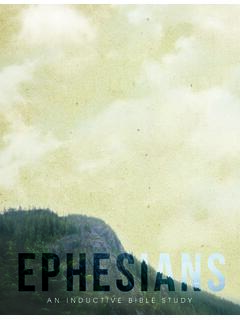Transcription of 101 Drills for the Company Officer - Code 3 Fire Training
1 101 Drills For The Company Officer / The Company Officer As The Training Officer Of Their Crew = = = = = = = = = = Steve Prziborowski - Deputy Chief Santa Clara County (CA) Fire Department OBJECTIVES: Identify 101 different Drills to use in a variety of situations. Define the role a Company Officer has in Training , educating and mentoring their crew. Create a Training plan to best meet the needs of their personnel. What are the challenges a Company Officer has when a6emp7ng to train their personnel? 3 What is the role of the Company Officer in regards to Training ? What are the characteris7cs of an effec7ve Training Officer ? 5 Top 10 Contributing LODD Factors: Command and Control (includes size-up) Fire Behavior Building Construction Human / Cultural Items Communications Top 10 Contributing LODD Factors: Safety / Staffing Water Supply Fire Prevention Ventilation Training & SOP/SOGs What is the role of the Company Officer in regards to Training ?
2 CREATING A Training PLAN Daily, weekly, monthly, annual, long-term Don t just rely on your Training Officer Understand the mandates Know strengths/weaknesses of crew Know the career development needs of crew WHERE TO DRILL Fire station / apparatus bay / kitchen table First-due area Other locations within your jurisdiction Outside of your jurisdiction Department Training center / classroom WHO WILL INSTRUCT? The Company Officer The paramedic or EMT The engineer The firefighter The probationary firefighter The resident expert Outside instructors 101 Drills FOR THE Company Officer APPARATUS FAMILIARIZATION 1. What is in each compartment? Can they name what is inside, location / quantity / use of each item, etc., with the door closed? 2. Pick a seldom used tool, one per shift, and tell everything you know about it.
3 3. Visit other types of rigs within your department - show and tell APPARATUS OPERATION 4. Perform the daily DMV pre-trip inspection 5. Review basic hydraulics / pump pressure calculations. 6. Review pump operations basic and troubleshooting. APPARATUS OPERATION 7. Practice basic & defensive driving techniques. 8. Spot apparatus for a variety of situations (fires, freeway calls, etc.) BASIC FIREFIGHTING 9. Review search and rescue techniques, terminology, challenges, and then practice in different types of structures 10. Review forcible entry tools, techniques, and challenges 11. Review operations for unique situations such as basements, parking garages, subways, railroads, trench rescue, confined space, water rescue, etc. BUILDING CONSTRUCTION 12. Review the basic types (I, II, III, IV, V) of construction, especially common buildings within your jurisdiction.
4 13. Walk through buildings under construction, identifying type of construction, also discuss strategy & tactics. BUILDING CONSTRUCTION 14. Identify unique hazards relating to buildings within your jurisdiction (window bars, driveway gates, etc.). 15. Locate videos on YouTube showing differences in time of building collapse for lightweight vs legacy construction. COMMUNICATIONS 16. Portable & mobile radio usage / capabilities. 17. Department paperwork (ICS form 201, form 214, t-cards, tactical worksheets, commonly used maintenance forms, etc.). 18. Radio etiquette / terminology DEPARTMENT MANUALS 19. Review a Policy / Rule / a day 20. Review the Labor / Management agreement (if applicable) 21. Scavenger hunt to locate different, commonly used Policies (sick leave, shift trades, etc.)
5 EMS 22. Pick a different diagnosis to discuss (cardiac, respiratory, ALOC, etc.) each day 23. Pick a treatment protocol each day to review with the crew 24. Review Triage procedures EMS 25. Practice a different National Registry Skill (patient assessment, splinting, taking vital signs, airway management, spinal immobilization, childbirth, etc.) 26. Review Mass Casualty Incident procedures FIRE BEHAVIOR 27. Review fire behavior terms and strategy / tactics to mitigate each. 28. Watch Dave Dodsen s Reading Smoke DVDs. 29. Review YouTube videos showing flashover time then vs. now. HAZ MAT 30. Review basic Haz Mat awareness & operations level actions (Safety, Isolate & Deny Entry, Notifications) 31. Review the latest Emergency Response Guide (orange DOT book) 32. Practice setting up an emergency decontamination station 33.
6 Show and tell with your local Haz Mat unit HIGH-RISE FIREFIGHTING 34. Review key ICS positions for High-rise incidents 35. Review High rise operations (including ALS Base) 36. Practice standpipe operations, including troubleshooting, pumping, etc. HOSE 37. Hose terminology / maintenance, including hose streams, nozzles and foam 38. Deploy small hand lines (1 , 1 ) 39. Deploy large hand lines (2 ) HOSE 40. Deploying a portable deck gun / master stream 41. Determining length of hose needed 42. In a building, make the hose into spaghetti and order personnel out to see if they can find the couplings ICS / NIMS 43. Review common components of ICS / NIMS, including: - Terminology - Command staff - General staff - Position titles - Position duties, etc. LADDERS 44. Ladder terminology / maintenance 45.
7 Determining appropriate length for job 46. Attic / Folding ladder usage 47. Throw each size of ladder carried 48. Aerial device operation / placement MAP READING / AREA FAMILIARIZATION 49. How to read different map books 50. Place street names in a coffee can to pass around to see if your crew knows where the street is. MAP READING / AREA FAMILIARIZATION 51. Reviewing log book, previous calls 52. Target hazard review (FDCs, challenges, etc.) 53. Key address points within the jurisdiction (N/W/S/E, digits, etc.) MISCELLANEOUS 54. Do a fire inspection with a fire inspector 55. Have a fire investigator review cause/origin & evidence preservation techniques 56. You Tube / videos / DVDs MISCELLANEOUS 57. Fire trade magazine articles / pictures 58. Computer usage (reports, email, etc.)
8 59. History of the fire service, and more importantly, history of your department RIC / RIT / FAST OPERATIONS 60. Review RIC operations, including terminology, tool caches, member assignments, radio communications, deployment issues, etc. 61. Have a mayday scenario to put it all together ROPES & KNOTS 62. How to inspect and maintain your ropes 63. How to tie each type of knot you may have to know 64. Use a rope to tie a tool or hose line for hoisting to an upper floor ROPES & KNOTS 65. Review mechanical advantage principles 66. Set up a basic lowering system 67. Change the lowering system to a raising system (z-rig) SAFETY & SURVIVAL 68. Review vehicle fire safety operations 69. Don your PPE for time 70. How to inspect and maintain your PPE 71. Review electrical emergency operations SAFETY & SURVIVAL 72.
9 Review and discuss Firefighter Fatality reports, and websites such as SALVAGE OPERATIONS 73. How to maintain and use various salvage tools (salvage covers, hall runners, visqueen, squeegees, water vacuums, sprinkler shut-offs, etc.) SCBA 74. SCBA terminology & maintenance 75. Don your SCBA for time 76. Pass through a narrow opening while wearing an SCBA SCBA 77. Determine how long it takes to suck down one SCBA bottle 78. Emergency procedures while using an SCBA 79. How to refill / change SCBA cylinders SIZE-UP 80. Review basic components of size-up. 81. Practice doing radio reports on different types of buildings and in different situations. STRATEGY & TACTICS 82. Review the different strategic modes of firefighting (offensive, defensive, etc.)
10 83. Review the 3 primary Incident Priorities: Life Safety / Customer service (us and them) Incident Stabilization / Hazard Mitigation Property conservation STRATEGY & TACTICS 84. Review RECEO-VS, SLICERS, etc. R = Rescue V = Ventilation E = Exposures S = Salvage C = Confinement E = Extinguishment O = Overhaul STRATEGY & TACTICS 84. Review RECEO-VS, SLICERS, etc. Sequential Actions: S = Size-up L = Locate fire I = Identify/control flow path C = Cool heated space from safe location E = Extinguish Actions of Opportunity: R = Rescue S = Salvage TOOLS & EQUIPMENT 85. How to inspect and maintain a specific tool or grouping of tools (hand tools, power tools, etc). 86. How to inspect, maintain and operate each fire extinguisher. VEHICLE EXTRICATION 87. Review how to use, inspect, and maintain power tools & hand tools relating to vehicle extrication 88.




